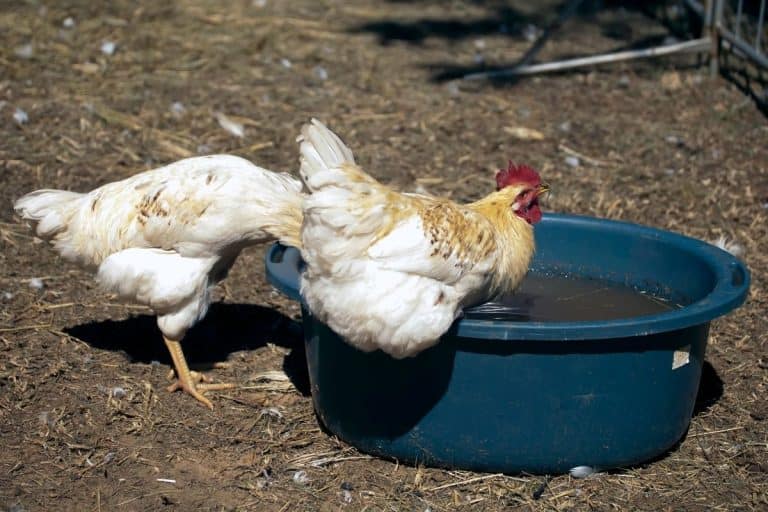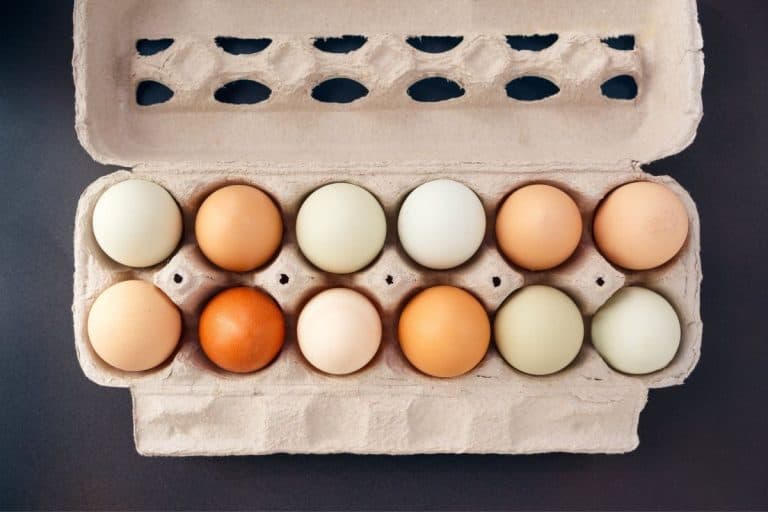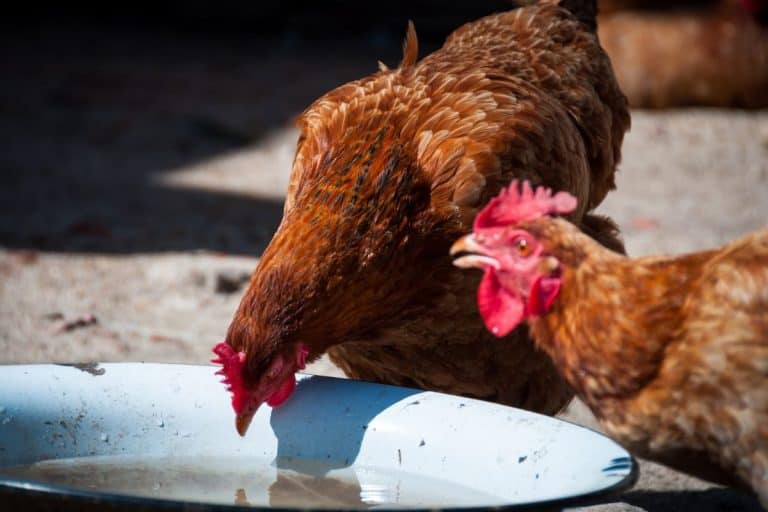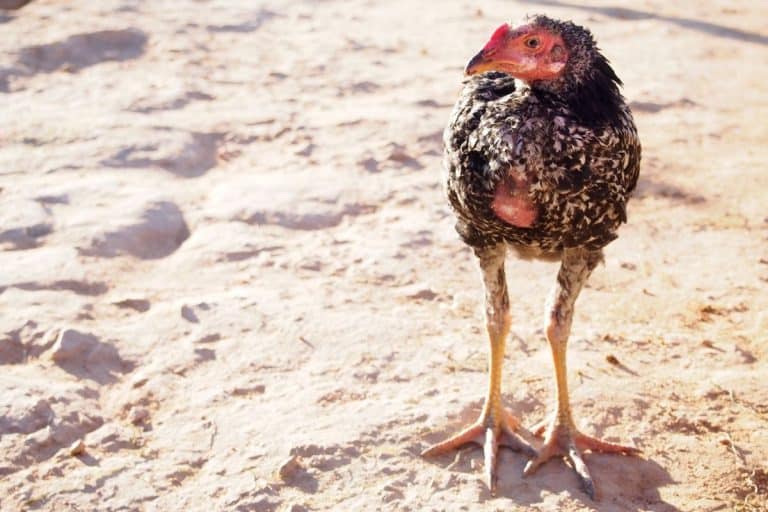Why Do Chickens Have Wings? (7 reasons you don’t know)
Chickens are classified as a bird species because they have wings and feathers, but despite having large wings and a feathered body, they are not very good flyers.
In general, chickens cannot fly for long distances, but their wings assist them in short flights and while jumping or climbing over obstacles like walls or fences. They also use their wings for a variety of other purposes, such as display and safety.
You’ve come to the right place if you’re curious to know why chickens have wings when they can’t fly. Read on, as I’ll explain the purpose of wings and how they benefit the chickens.
Hey chicken buddies: Quick heads-up before going further! I've put together a list of stuff I use and love for my flock. If you're curious about what keeps my hens happy, click here to find out.
7 Reasons Why Chickens Have Wings
Many chicken owners believe that the wings of a chicken serve no purpose and are just rudimentary or vestigial body parts, but that is not true. Chickens may not be able to fly long distances with their wings but they have a lot of other functions which include the following:
1. Jumping and climbing obstacles
Chickens are extremely active creatures who constantly explore their surroundings because of their natural curiosity and need to find food. While a chicken’s wings may not be very useful for long-distance flight, they do give them a much-needed lift when they are attempting to climb high objects like walls, rooftops, and trees.
By creating drag in the air and slowing their fall, their wings also protect them from forceful impact when they jump down from a high location, and because of this, they avoid fractures and injuries even when they jump from a tall tree or a rooftop.
2. Self-defense
Chickens defend themselves against predators like foxes, big cats, raccoons, badgers, etc by using their wings. When a predator approaches them they spread their wings to appear larger so that the predator won’t be tempted to attack them.
They can also deliver a painful punch to predators with their bones and large primary feathers present at the tip of their wings. To evade predators, they forcefully flap their wings to generate quick movements and high speed.
3. Balance
Wings on a chicken not only help them balance on trees, cables, and walls, but they also play a critical role in mating. When a rooster mates with a hen, it will climb on its back, and without its wings, it will be unable to balance properly. Therefore, a rooster’s wings help it maintain its stance during mating, and some hens also spread their wings to maintain their position.
4. Offer protection for the young ones

If you keep or breed chickens, you’ve probably seen the young chicks hiding under their mother’s wings. Mother hens typically spread their wings to protect their young from the rain, and they also serve to keep the chicks warm at night and in cold weather.
They also provide a safe refuge for chicks against birds of prey. Almost all mother hens spread their wings to allow their chicks to hide underneath them because it is in their biological instinct to do so.
5. Beauty display
Chickens are very fancy creatures and some of them have mesmerizing colors, especially males. Males will often use their wings to display their colors and beauty to attract females and just for show. The price and value of fancy chicken breeds are heavily dependent upon the size, color, and pattern of their wings.
6. To assert dominance
Male roosters will often flap their wings to make them look bigger and as a sign of aggression to ward off other males in their territory. Wings also assist them in fights with other males and protect them from getting injured by the claws and spurs of their opponents.
7. Dust bath

Dust baths are very important for the health of chickens as they help keep them free from parasites. With the help of their wings chickens are able to spread the dust evenly on their bodies as they hit and flap them on the ground.
Wait, I have some recommendations for you!
Before you go any further, I want you to take a look at some of the recommendations I've handpicked for you. I think these are essential items you should have for your chickens flock. You can check them out and buy them directly from Amazon.
 | 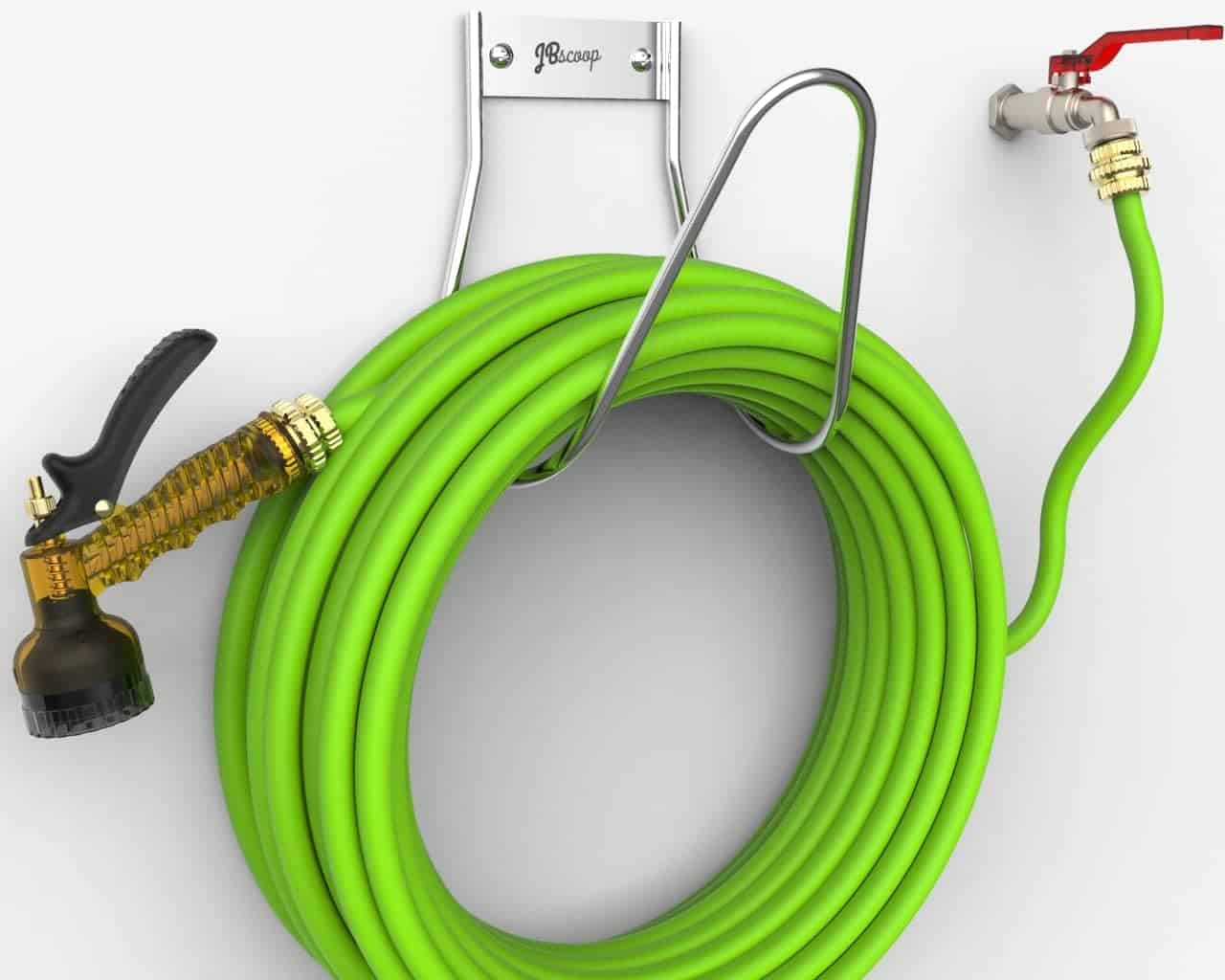 | 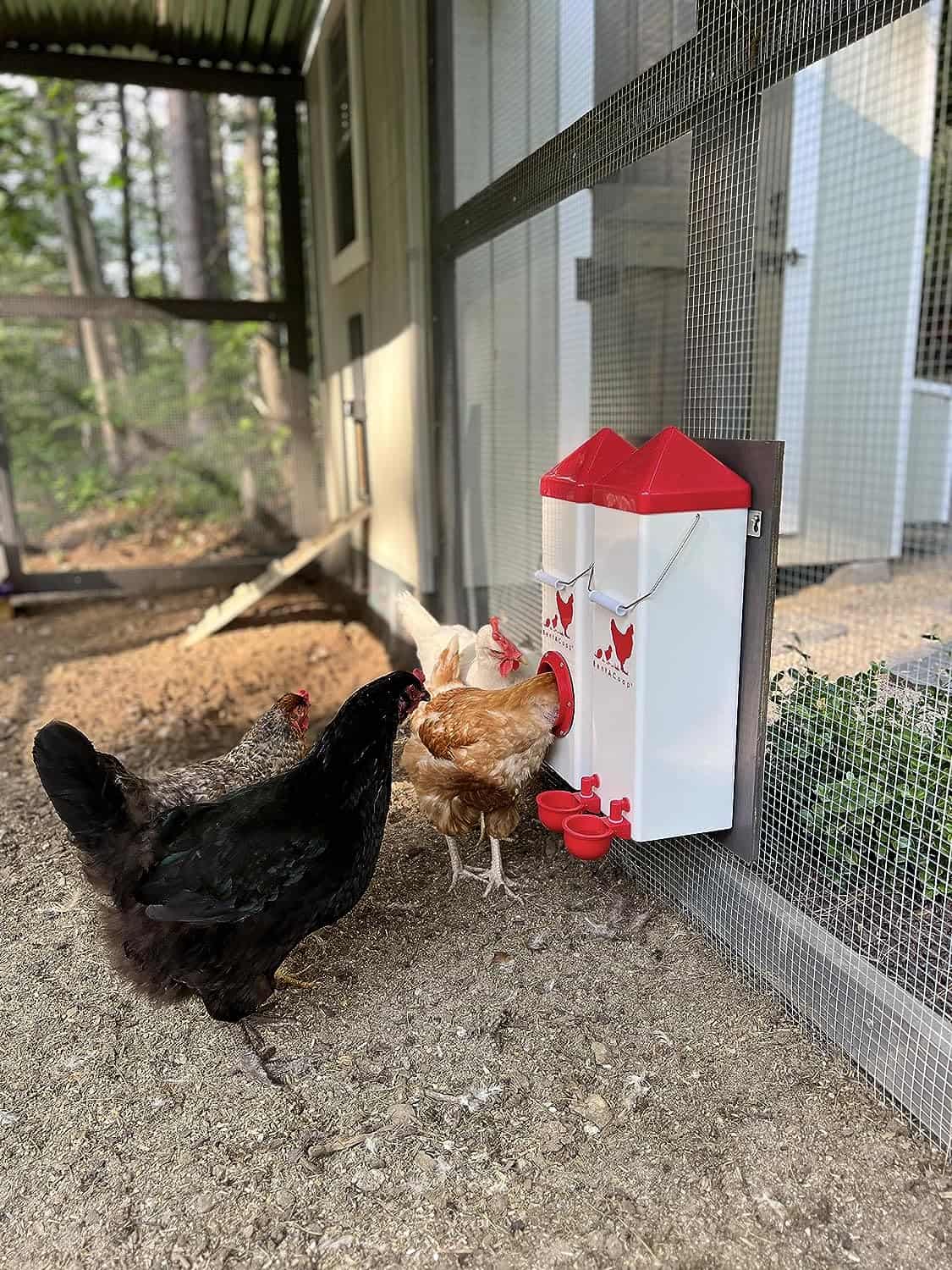 |  |
| Essential accessory for your coop | No more tripping over hoses! | Predator protection made easy | Comfort + style is possible |
Do Chickens Fly? How Far?
Technically speaking, chickens can fly, but only occasionally for very short distances. Due to their heavy build and muscular structure they are unable to fly traditionally like other birds, despite the fact that their wings are equipped with primary and secondary feathers that aid in flying.
Location, breed, nutrition, and other aspects can also affect a chicken’s ability to fly. They do not prefer to fly and will only do so in short bursts to avoid predators. Chickens typically fly at a speed of about 10 mph for 10 to 15 seconds at a time.
A chicken’s flight distance is determined by the height from which it is flying. Normally, if there are no obstructions in its path, a chicken flying from a height of about 10 feet can travel a distance of about 30 to 40 feet. As the height increases, so does the flight distance. The longest known flight distance by a chicken is 301.5 feet, which was recorded in 2014.
Did Chickens Ever Fly? (History And Evolution)
According to scientific evidence, the ancestors of modern chickens, also known as jungle fowl, were domesticated for the first time about 7500 years ago in Asia.
Because they lived in dense jungles with plenty of cover from aerial predators, they were poor flyers and didn’t need to fly long distances and were only able to fly to short trees, for avoiding ground predators that got too close.
The chickens ability to fly further diminished after they were domesticated by humans and selectively bred for meat and eggs. Since they didn’t have to worry about predators while living with humans, this factor also had an impact on their genetic makeup and capacity for flight.
Which Chicken Breeds Are Best At Flying?
Generally, chicken breeds that are not bred for meat purposes and have light and slender bodies are the best flyers. Overall, egg-laying breeds are the best flyers because they have little fat and muscle on their bodies. These breeds can fly for long distances if provided with the inclination.
Best flying chicken breeds include Ancona, Andalusian, Leghorn, white-faced black Spanish, Campine, Catalana, and Sicilian Buttercups. If given the opportunity, these breeds will roost in trees rather than in their coop because they are the best at climbing trees and escaping predators.
Chicken breeds that are moderate flyers include Lakenvelder, Ameraucana, La Fleche, Fayoumi, Jaerhon, Red Stars, Old English Game and Appenzeller Spitzhauben.
Silkies are considered the worst flying chicken breed because their wings contain fluffy plumage rather than well-developed feathers.
What Is Wing Clipping In Chickens?
Each wing of a chicken has 10 primary feathers which help chickens to fly. Wing clipping is a procedure in which these primary feathers are clipped so that the chicken is unable to fly and climb on walls, roofs, trees, etc.
Usually, the feathers of just one wing are clipped to off balance the body of the chicken so it is unable to fly and climb objects. The primary feathers can be clipped with a sharp pair of scissors and are typically cut above the base.
Wing clipping is done in chickens that constantly escape their enclosure or coop. If you want to stop your chicken from wandering around in the neighbor’s yard or property you should probably clip its wing. Wing clipping in chickens have certain advantages and disadvantage which are listed below:
Advantages of wing clipping in chickens:
- Disrupts their ability to fly and balance
- It is a non-painful procedure
- Feathers will grow back as the chicken will molt
Disadvantages of wing clipping in chickens:
- If done unprofessionally it can result in bleeding
- Makes your chicken vulnerable to predators
- They are not able to climb on high spots
- Due to an imbalance chickens can fall from high locations and may get injured
- Disturbs their beauty
I have a full article on this topic if you need more details: Pros, Cons & Alternatives of Chicken Wing Clipping
Why Are Modern Chickens Poor Flyers?
Modern chicken breeds, including hybrid varieties raised primarily for meat production, such as broilers, have almost entirely lost their ability to fly. This is due to the fact that we have selectively bred them to gain more weight, making them so heavy that even though they have wings, they are unable to fly.
To accommodate more muscle, their wings have also grown smaller over time relative to their bodies. Because of selective breeding, their wing muscles have also lost structure, and their wings can no longer generate lift to help them climb even small objects. For instance, broilers usually weigh so much that they can hardly fly over obstacles.
Can Young Chicks Fly?
Chicks are unable to fly because their wings are underdeveloped and they lack primary feathers. A chick will normally get its full set of feathers, including its primary feathers, when it is about 5 to 6 weeks old, depending on the breed and nutrition.
But broiler chicks will get their primary feathers after about 2 weeks due to their fast growth pattern. Even though a young chick has primary feathers, it cannot fly properly until its wing muscles have fully developed and are able to supply the necessary power.
Next article: Why Do Roosters Flap Their Wings?



